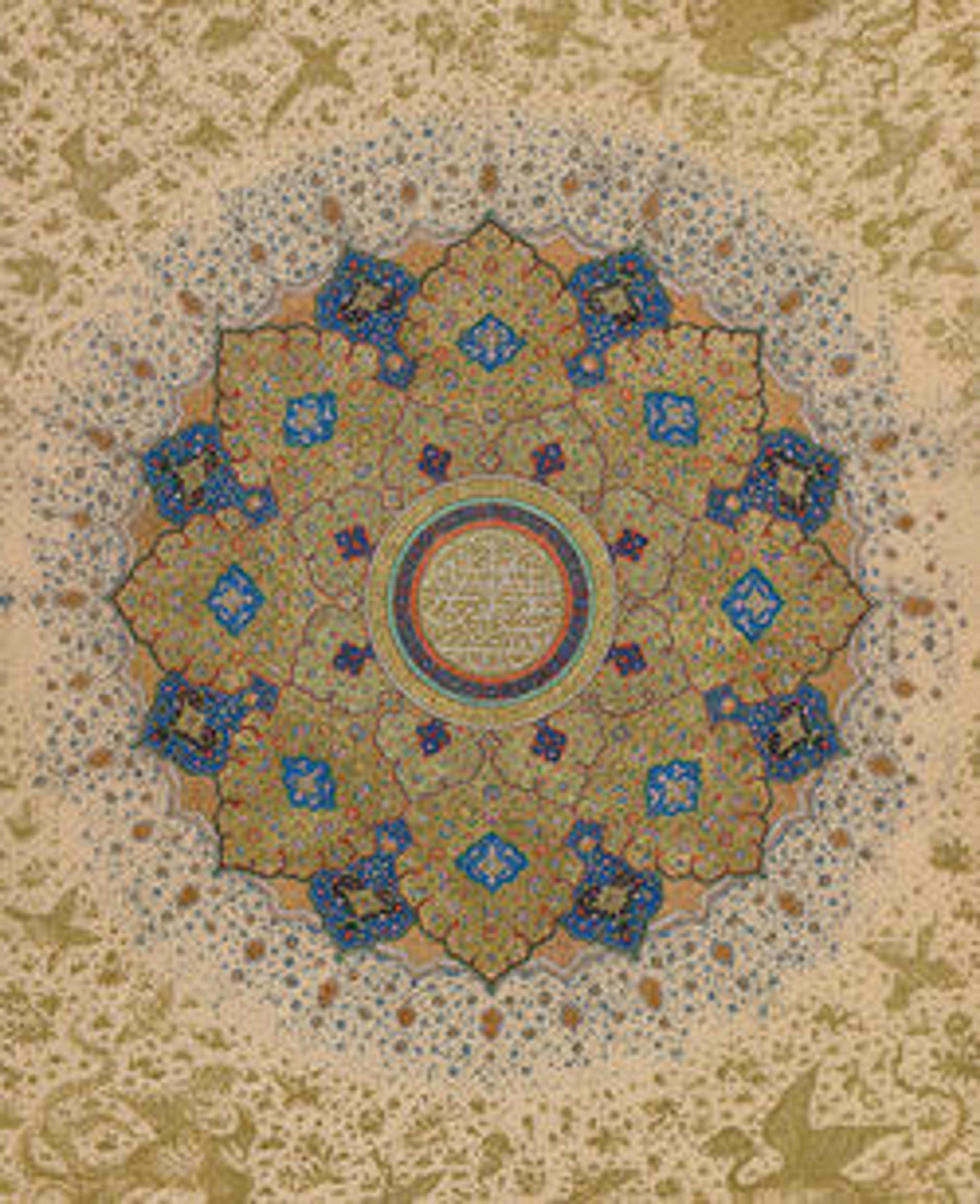"Conquest of Baghdad by Timur", Folio from a Zafarnama (Book of Victory)
This folio once illustrated a manuscript of the Zafarnama, a biography of the ruler Timur commissioned by his grandson Ibrahim Sultan. The text glorifies Timur’s many victories on the battlefield, including his 1401 siege of Baghdad, depicted here. The distinctively spare yet highly animated angular compositions are characteristic of manuscript painting produced in Shiraz in this period.
Artwork Details
- Title:"Conquest of Baghdad by Timur", Folio from a Zafarnama (Book of Victory)
- Author:Sharaf al-din 'Ali Yazdi (Iranian, Yazd 1370s–1454 Yazd)
- Artist:Painting by Unknown
- Calligrapher:Ya'qub ibn Hasan, known as Siraj al-Husaini (active Shiraz, Iran)
- Date:Dhu'l Hijja 839 AH/June–July 1436 CE
- Geography:Made in Iran, Shiraz
- Medium:Ink, opaque watercolor, and gold on paper
- Dimensions:H. 11 3/8 in. (28.9 cm)
W. 8 in. (20.3cm) - Classification:Codices
- Credit Line:Rogers Fund, 1955
- Object Number:55.121.17
- Curatorial Department: Islamic Art
More Artwork
Research Resources
The Met provides unparalleled resources for research and welcomes an international community of students and scholars. The Met's Open Access API is where creators and researchers can connect to the The Met collection. Open Access data and public domain images are available for unrestricted commercial and noncommercial use without permission or fee.
To request images under copyright and other restrictions, please use this Image Request form.
Feedback
We continue to research and examine historical and cultural context for objects in The Met collection. If you have comments or questions about this object record, please contact us using the form below. The Museum looks forward to receiving your comments.
